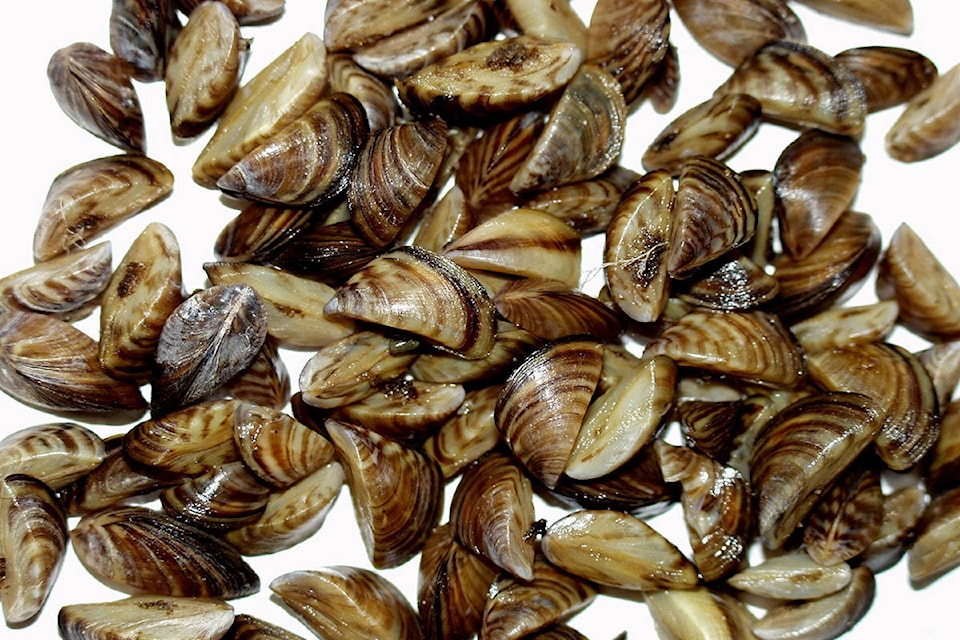A West �������� resident has seen first-hand the devastation caused by invasive mussels where she spends her summers in Manitoba.
And she doesn’t want the same fate to befall Okanagan Lake, while wondering if government is doing enough to prevent what could be an ecological and economic disaster.
Leslie Asselstine and her husband bought a cabin on the shoreline of Lake Winnipeg 17 years ago as a summer cottage retreat while they were still living in Montreal. Today, that lake is home to invasive mussels, first detected in 2013, that are destroying its ecosystem.
“This may sound strange, but the biggest problem is that everyone thinks they’re doing a good job until it’s too late,” Asselstine said of invasive mussel detection and prevention efforts.
She said predictions of the mussel invasion, like an algae growth problem that plagued Lake Winnipeg’s water quality for years prior, were ignored by government until it was too late.
Asselstine said Eva Pip, a professor at the University of Winnipeg who specializes in water quality and ecosystems, sounded the alarm in advance on both issues and was largely ignored or discredited.
“This is someone who has spent her life studying that lake. She is a foremost expert on it and the government chose to bring in an outsider who says we think you’re wrong,” Asselstine said.
Pip says now that Winnipeg Lake is a lost cause, one that B.C. water and environment protection officials point to as case study they don’t want repeated in B.C.
“The problem is irreversible and in fact it’s a catastrophe, it’s a disaster,” Pip told Global News in Winnipeg last year.
“It’s very said because all we have to look forward to now in Lake Winnipeg is a complete and eventual collapse of our ecosystem.”
The Lake Winnipeg watershed is the second largest watershed in Canada and includes parts of four provinces and four U.S. states. The lake itself is 24,515 sq. km. in size extending to Churchill in the northern part of Manitoba and south to within 55 km of Winnipeg.
Asselstine said the algae issue was created by an over-abundance of phosphorus and nitrogen draining into the lake via rivers and surface runoff.
“On a hot day you could see these massive plumes of algae floating in the lake which could be extremely toxic, like a green sludge. Kids would swim in the lake and come out covered in slime,” she said.
She says algae concerns expressed by Pip fell on deaf ears, and she feels similar warnings about invasive mussels generated the same fate.
“So here we are 17 years later with a dying lake and zebra mussels multiplying at an unstoppable rate,” Asselstine said.
Lake Winnipeg is the linchpin behind a $100 million tourism industry and $25 million fishing industry.
She said the invasive mussels have attached themselves to boats, plugging up motors and water intakes. Beaches are ruined because the dead mussels, which can give birth to anywhere from 30,000 to one million eggs in one birth cycle, wash up on the shore.
The shells are sharp and impossible to walk over in barefeet, and they create a nasty residue smell.
Asselstine said they will make their annual summer pilgrimage to their summer cabin uncertain about what the condition of the lake will be this year.
She talks about that “massive ball in the prairie sky,” the rising and setting sun, as something she still wants to see, but the crystal clear water and sandy beaches Lake Winnipeg was famous are now in jeopardy.
“To no longer have that, you think, ‘Oh God, what a travesty,’” she said.
A public education campaign about invasive mussels has been adopted in B.C. along with expanded boat security stations established.
And the province is working with Saskatchewan and Alberta along with northwest states south of the border to keep the invasive mussels out of the last uninfested region of North America.
That defensive wall, however, was breached in Montana last December when a mussel larvae was positively identified in a reservoir.
But Asselstine is concerned just one boat transferring mussels is all it takes to infect a lake, with no solution for controlling them at that point.
“When you see how we have a boil advisory right now, it reminds you that water is a precious commodity, that when our bodies of water start dieing off you begin to have big problems,” she said.
She hopes that message will resonate with boaters traveling across Western Canada and the northwest U.S. this summer and the years to come.




